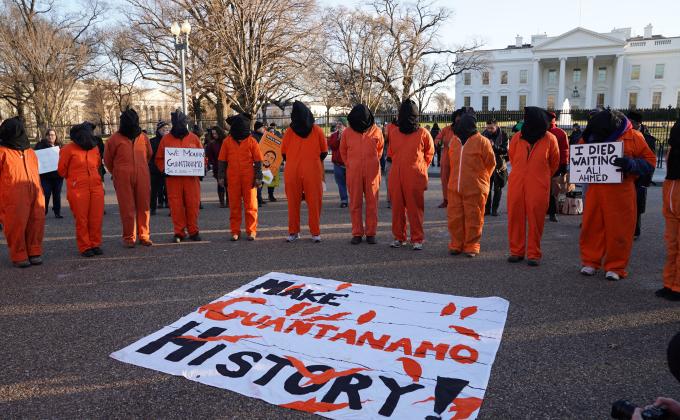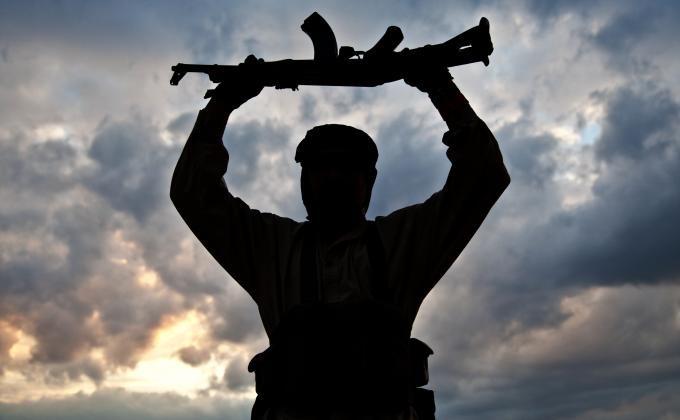Over the past few weeks, there have been multiple news items centring on the problem of what to do with terrorist fighters that have been captured by a variety of actors in Syria and Iraq in the battle to destroy Islamic State (IS). Numbers are fluid but we do know that tens of thousands of men and women left from more than 100 countries to join IS. Many are dead, some are still fighting, a few have already returned to their homelands and the remainder are in custody. Some of those who were taken alive were subject to quick trials and summarily executed (especially in Iraq).
What then to do with the others? Those held by the Syrian Democratic Forces (SDF) – predominantly Kurdish forces – find themselves the object of efforts to get rid of them. Their jailers have asked several countries to take their nationals back. This request received some support recently when US Secretary of State Mike Pompeo made a similar suggestion (probably motivated by US concerns that these terrorists could be freed and capable of committing more attacks once American troops are withdrawn from Syria). It got another boost in US President Trump’s recent call for the EU to “step up and do the job that they are so capable of doing.”
The response of several European countries to this problem has been mixed. France recently reversed its policy and now apparently will take its citizens back. Germany is considering a similar plan. As for the UK, it has hesitated to accept returnees and has even stripped British citizenship from some still in theatre. In December 2018, a Belgium court decided that two women who joined IS should be repatriated from a Syrian-Kurdish camp, together with their six children. The Belgium government has appealed the decision of the court, which is still pending, stating a distinction should be made between children and their mothers with regard to their repatriation. Most recently, Danish politicians rejected US calls to repatriate their nationals, stating that they had “wasted their citizenship”.
Which brings us to Canada. The question of what to do with these terrorists has dominated national news over the past week. The Minister of Public Safety, Ralph Goodale, has stated publicly that the Liberal government has no plans to repatriate Canadian IS foreign terrorist fighters, citing the possible danger to consular officials in what is still a war zone.
It is important to put the challenge facing Canada into perspective. Unlike many of its Western allies, the number of Canadians who left to join IS or other jihadi groups in recent years is fairly small. Officials announced a few weeks ago that 250 high-risk extremist travellers with a connection to Canada have travelled overseas (although no time period was specified) – about half into Syria, Iraq, and Turkey, and the rest into Afghanistan, Pakistan and parts of north and east Africa. Approximately 190 of the 250 people who left are still abroad, with many of them likely dead. The remaining 60 have returned to Canada, but only a small number of that figure travelled to Syria, Iraq and Turkey, and most have travelled elsewhere. This pales in comparison to the figures of UK, British and French citizens and is more in line with what Sweden has had to deal with.
Despite the Canadian government’s categorical rejection of calls to take measures to facilitate the return of Canadian IS fighters, there are voices calling for a more proactive policy. Some have stated that Canada has a ‘moral obligation’ to help. There have been interviews of prisoners carried out by reporters and academics who traveled to Syria and Iraq in which the detainees profess their innocence and plead for help. A complicating factor is the presence of women and children, many of the latter born in the so-called ‘Caliphate’. Many of these women deny any role in the atrocities committed by IS, claiming that they merely followed their husbands or were coerced to do so. Research on the role of women with IS shows a rather more nuanced picture, however, and underlines that most of these women made their own choices.
Canadians are generally not in favour of government action to repatriate these foreign terrorist fighters. Nor is it obvious that the state has a legal obligation to do so. The Canadian Charter of Rights and Freedoms notes in Section 6 that “Every citizen of Canada has the right to enter, remain in and leave Canada”. This does not imply that the government has to enable your return to the country, although it does mean that the state cannot prevent such return. In other words, if IS detainees are released and somehow succeed in traveling back to Canada they would have to be allowed entry.
A number of terrorism cases and settlements have put the Canadian government in a bad light of late. Several criminal trials have resulted in acquittals and a multi-million dollar payout to former Guantanamo prisoner Omar Khadr was objected to by the vast majority of Canadians. Opposition parties have taken the Trudeau government to task for saying ‘A Canadian is a Canadian is a Canadian’ in their justification for these settlements. A federal election will take place this fall and it is probable that the ruling party does not want to give its rivals material to use against it during the campaign. There is also an embryonic far right political party (the Peoples’ Party of Canada) that would benefit from any active efforts to repatriate those who turned their backs on Canada and fought for IS.
Another overarching concern is the threat of terrorism from returnees. While Canada has so far dodged that bullet (the UK, Belgium and France have not), the possibility of an attack is real. Even if the percentages of returning terrorists who commit attacks cited by Norwegian scholar Thomas Hegghammer remains a relatively low one at approximately 11 percent, that would mean some six active terrorists to date in the country. The resources required to investigate and monitor 60 returnees (or more) are significant and both the Canadian Security Intelligence Service (CSIS) and the Royal Canadian Mounted Police (RCMP), the two primary counter terrorism agencies, are facing multiple threats on many levels. It is also important to remember that one successful incident is one too many.
It is therefore more likely that the current government will continue to hope that this problem goes away. It is not likely to act more proactively in the lead-up to the election for fear of giving fodder to the other political parties. In the long run, however, government inaction risks future lawsuits alleging state negligence and if recent court cases are anything to go by there is a very real possibility that the taxpayer will be on the hook for considerable amounts of money.
Canada could, however, also examine what its closest allies are doing in this regard and adapt best practices for its situation. It also has the advantage of membership in the ‘5 eyes’ intelligence relationship that can be a significant advantage to the gathering and analyses of information relevant to determining which returnees pose the greatest risk upon return. This data may also be usable, in a best case scenario, to lay charges under the Canadian Criminal Code.
With the US pushing its European allies to take back their nationals, all eyes should be on developments in returnee policies and practices on the other side of the Atlantic. Canada can surely benefit from close observance and cooperation. It is also lucky, finally, that it has a relatively small foreign fighter problem in terms of number. Still, it is paramount that all relevant actors, including security intelligence, law enforcement and civil society, are allowed to weigh in on how best to manage them. With no clear ‘best practices’ for dealing with returning foreign fighters in play yet, the next couple of years are certain to be challenging.








